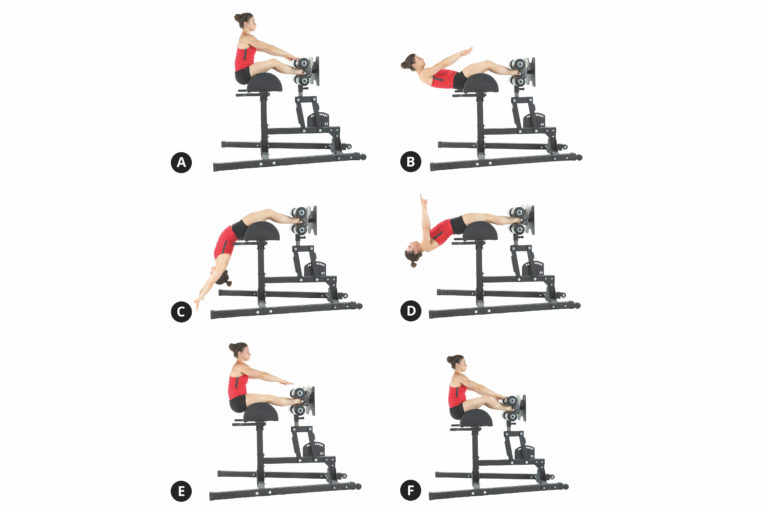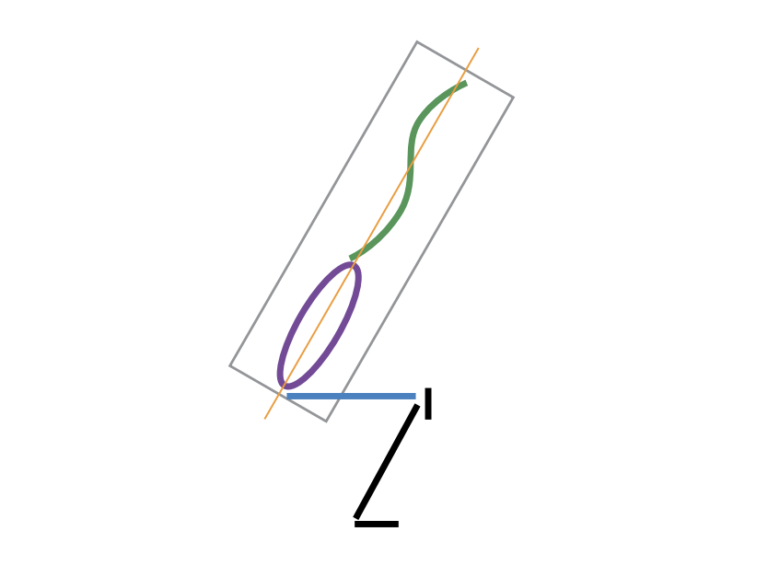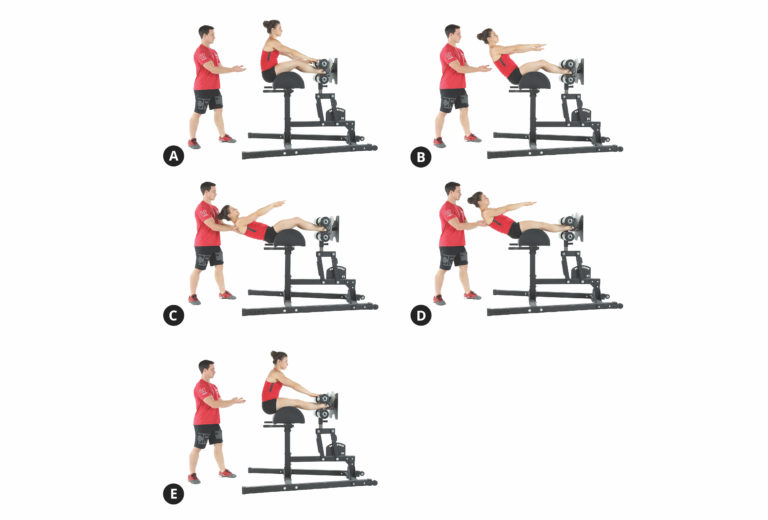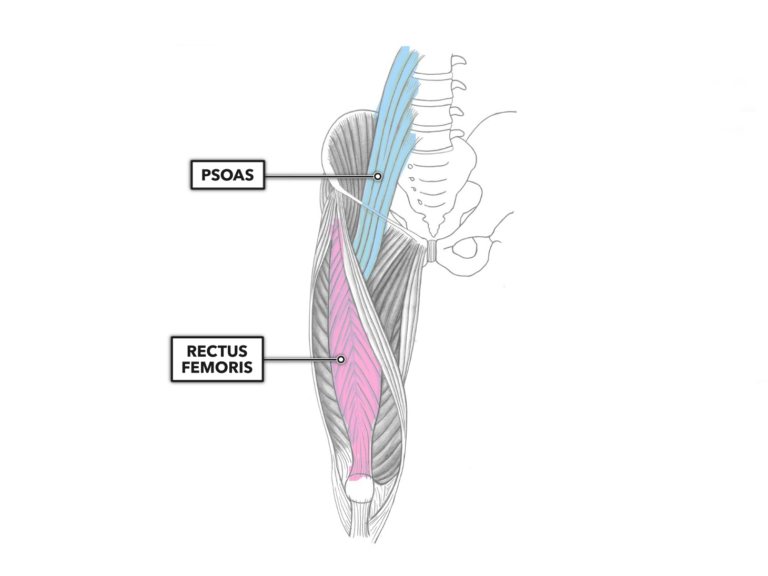CrossFit defines core strength as midline stabilization. When viewing an athlete from profile, a reference line trisects the spine and bisects the pelvis. Midline stabilization refers to the ability to maintain rigidity, stability, and a lack of deflection around that line (Figure 1). This translates to improved efficiency and performance as well as greater power output.
When we discuss core strength (midline stabilization), we are talking about static control. We do not want this relationship of spine to pelvis deflecting. Nevertheless, a lot of the commonly used “core” movements involve dynamic movements — the crunch, for example, requires a very deliberate flexion of the trunk. Conversely, when we deadlift, we very deliberately hold that relationship static.
While a cumbersome piece of gear, the GHD machine is essential to our work. We use the GHD for four exercises that heighten awareness and develop capacity with midline stabilization: the hip extension, back extension, hip-and-back extension, and the GHD sit-up.
The essential takeaway is that static contractions that stabilize the midsection are the most important and functional (powerful) muscular contractions in that region. Static contractions for midline stabilization are the best ab exercises known. No amount of crunches are ever going to get you to the same endpoint as the L-sit, overhead squat, deadlift, etc.
For the GHD sit-up, set the athlete up so the pelvis is behind the center of the pad. The athlete descends back to touch the ground and then comes back to seated. More than a few exercise physiologists and certified trainers have observed that this movement is pure hip flexion and consequently asserted “there’s no abs in that.” But in this exercise, the abs are maintaining midline stabilization against the force of the hip flexors pulling the athlete back to seated.
Before having athletes perform the GHD sit-up, ensure they have demonstrated capacity in the hip extension, back extension, and hip-and-back extension. Even after demonstrating such capacity, an athlete’s first GHD sit-ups should be performed in a shortened range of motion, with the trainer spotting from behind (Figure 2). A few easy sets with no visible signs of struggle might be it for the first dose. Start with 1 to 3 sets of fewer than 10 reps with the goal being exposure to the position, not fatigue. Assess the athlete tomorrow or a few days later and determine the effect from that dose, increasing the range of motion and volume of reps and sets as capacity allows.
Be sure to follow the same “ramp-up” process for fit athletes who have not completed a high volume of GHD sit-ups recently. Jumping back into a high volume of GHD sit-ups after a period of not practicing them is a sure-fire way to be too sore to train productively for a few days and may even cause more serious damage, like excessive swelling or rhabdomyolysis.
To perform a GHD sit-up, the athlete allows a degree of leg flexion in the descent. Then, the leg extends dramatically and pulls the athlete to seated (Figure 3).

Figure 3: The GHD sit-up
Conversely, if the athlete does not extend the leg to come to seated, the primary movers are the hip flexors, specifically the psoas. The psoas comes off the femur, runs through the pelvis (without attachment) and attaches to the lumbar spine. The hip flexors also include a very powerful complement to the psoas: the rectus femoris, which is the dominant piece of the quadriceps. The rectus femoris does not attach to the lumbar spine, but it attaches to the pelvis (Figure 4). This attachment to the pelvis is a point of enormous mechanical advantage and leverage. To fully engage that leverage, the leg must extend dramatically. The leg cannot sharply extend without working the rectus femoris — a leg extensor and a hip flexor.
The force with which an athlete comes up from this movement is amazing. Rather than being pulled from the psoas alone, which is a fairly dysfunctional kind of pull, the athlete uses the full complement of hip-flexor musculature.
Any time you are using a fraction of the primary movers responsible for an articulation, it is not natural or functional. Not extending the leg can also be a little irritating to the lower back due to shearing force on the lumbar spine. Performed correctly, however, the movement is not irritating to the low back. Straightening the leg enables profound musculature to lift from the pelvis. If the trainer can teach athletes who experience back discomfort due to shearing force to extend the legs and work the full complement of hip flexors, the margin where this irritation occurs moves from 3 reps to 4 reps to 10 reps and so on. That is rehabilitation. That is neuromuscular re-education.
To learn more about human movement and the CrossFit methodology, visit CrossFit Training.



Comments on Training the GHD Sit-Up
4 Comments
It looks like this individual in the demo is putting their back or lower back in hyper-extension, this seems unhealthy. Can you elaborate or educate me on this?
I would like an answer to this as well. Im observing that obviously this is only optimal once you have demonstrated that you have full capacity through the full range of motion. Before you even allow an individual to move into a degree of Flextion past the neutral mid line.
From this then I expect your building that capacity past that normal range of motion! - obviously this hyper extension is based on your level of experiance and ability with this movement.
Thoughts?
Not sure what qualifies as reasonable for your situation.... try declined sit-ups (with or without a weight/medicine ball), sit-ups off a plyo box/ bench with feet anchored, toes to bar, knee raises (with or without weight), or Ab-mat sit-ups (with or without weight)?